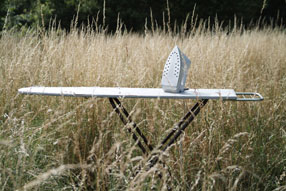design as a way to “see” sustainability
Change.org has initiated “Ideas for Change in America” to generate great ideas for the incoming Obama Administration. Organized into a range of categories, the ideas cover a wide range of causes from government reform to fair trade and humanitarian aid. I’ve submitted an idea to use great design, across government, as a tool for sustainability. You can vote for it here. If you like the idea, spread the word–it has to collect 921 votes by December 31st, 2008 to advance into the second round of ideas.
Here is the text for the idea “Use great design as a tool for sustainability.”
The government is responsible for a great deal of design, not only physical artifacts such as government buildings, uniforms, roads, or equipment, but also policies and purchasing. We need an interdisciplinary, design-focused group to ensure that all these design decisions are leveraged for the benefit of sustainability.
Public agencies have suffered from fragmentation, where individual resources and concerns are managed in isolation. For example, one agency manages fish (and game) without managing water, or commerce and consumerism without solid waste, or climate without emissions. This approach perhaps made sense when the objective was purely to consume resources, but it doesn’t work for sustaining resources indefinitely.
Design is a powerful way to implement a vision that integrates a range of sustainability concerns in the practical way that public agencies need. For example, if we use product design as our lens, an integrated sustainability picture arises that cuts across raw materials, manufacturing, transport, energy use, commerce, consumerism, and solid waste. Each of these categories would traditionally be dealt with by a different public agency; the integrated picture would be hidden. Sustainable architecture and other forms of sustainable design (from graphics to lighting) capture equally integrated and practical approaches.
The federal government’s design programs at the National Endowment for the Arts or the General Services Administration (“Design Excellence” program) have shown that great design can emerge from well managed processes involving thoughtful, knowledgeable experts. The next step is for government to use great design as a tool for sustainability.

We don’t normally “see” it this way: the lifecycle of a designed product or building shows its connection to a range of sustainability issues: natural resources, waste, consumerism, trade, time and geographic scale.
Have a good idea of your own? submit it before 31st December in 250 words or less at Change.org, and vote on others.